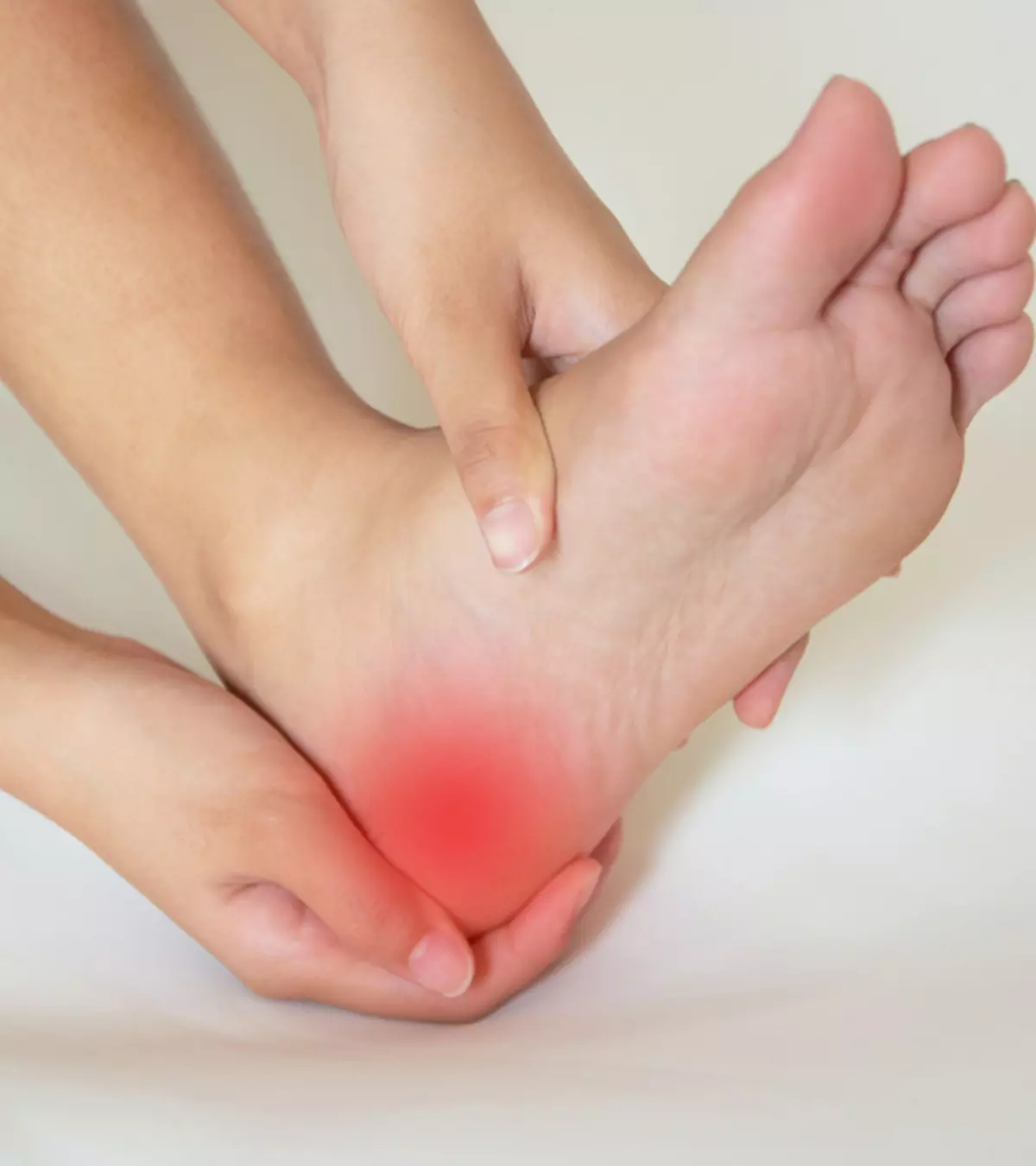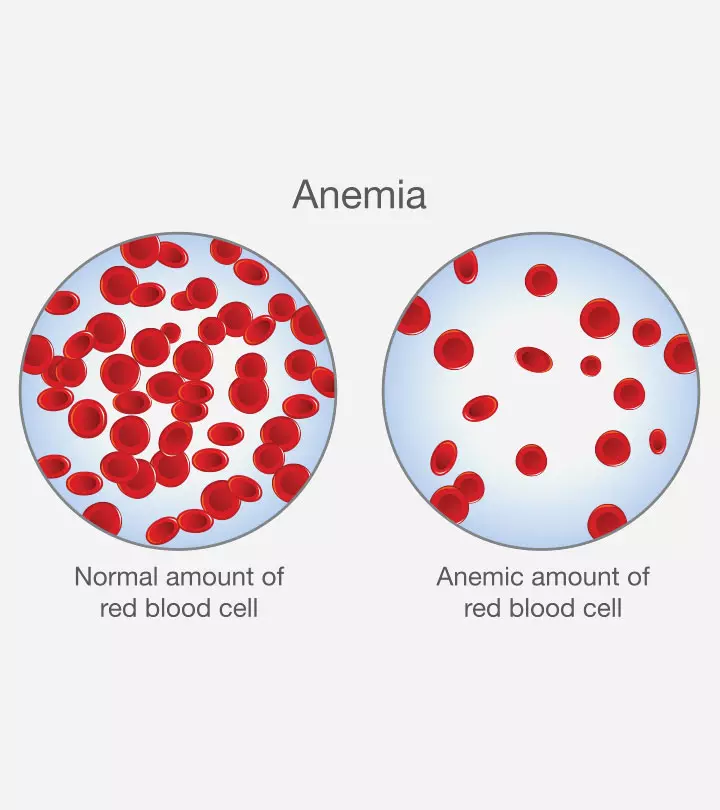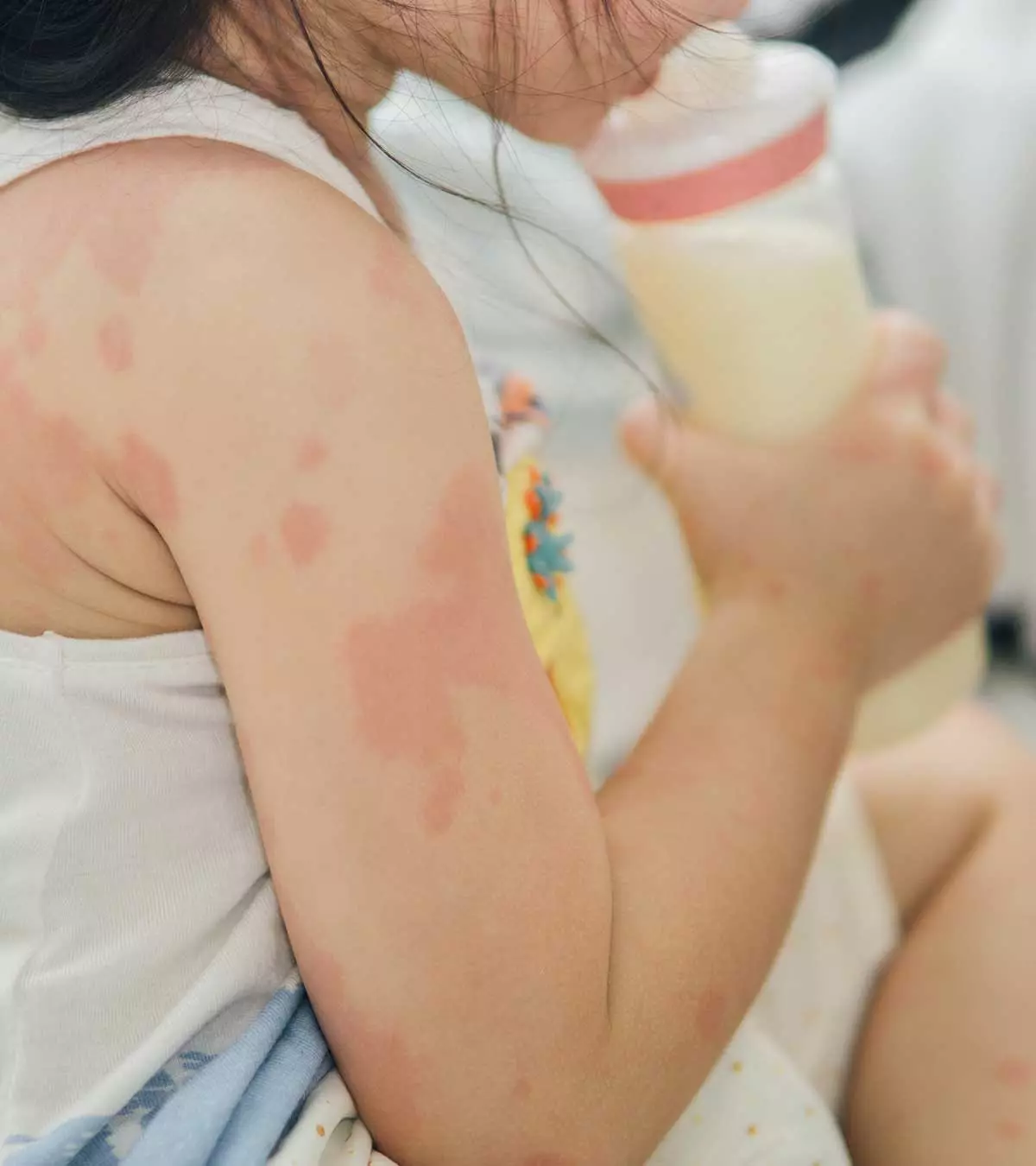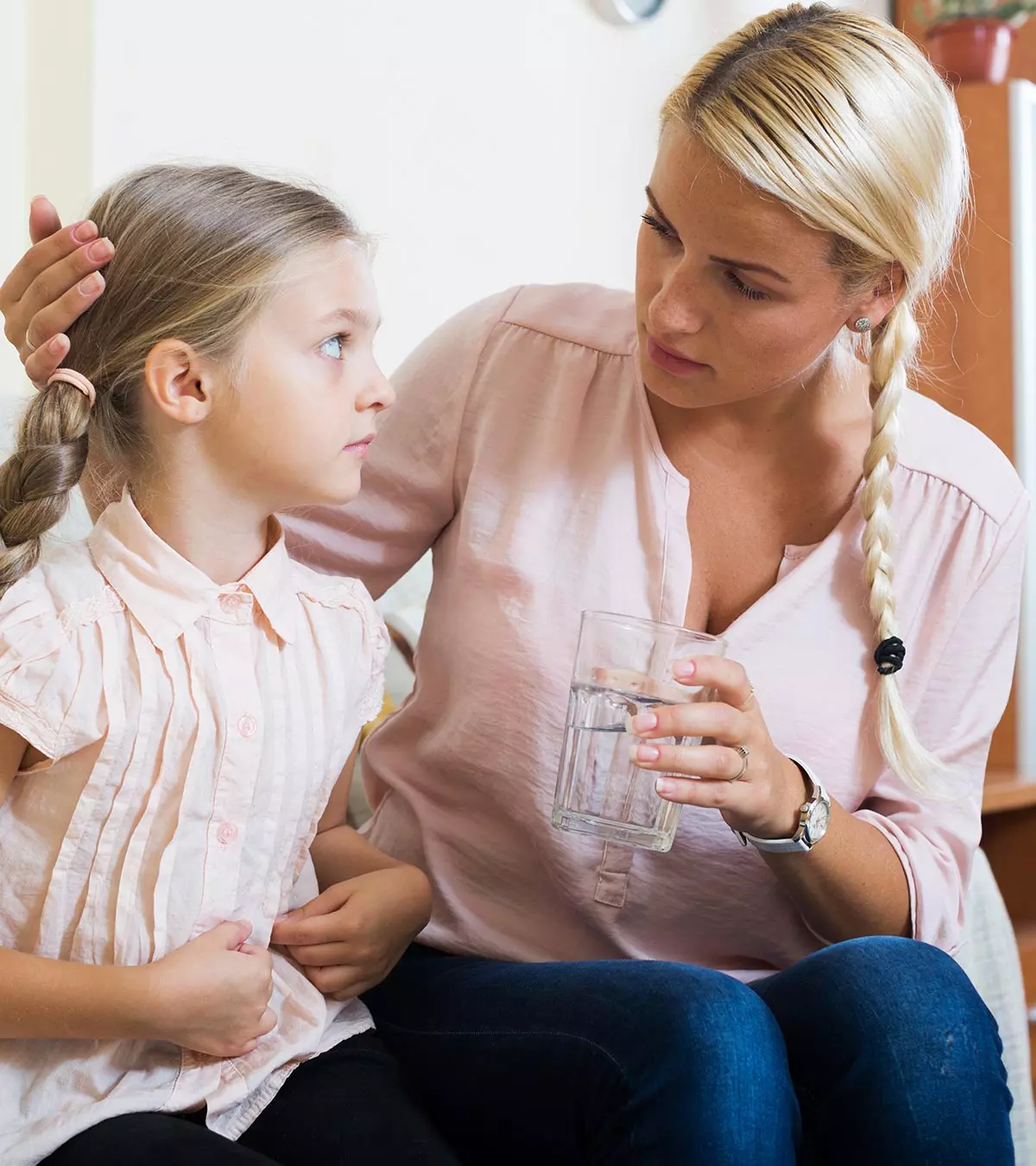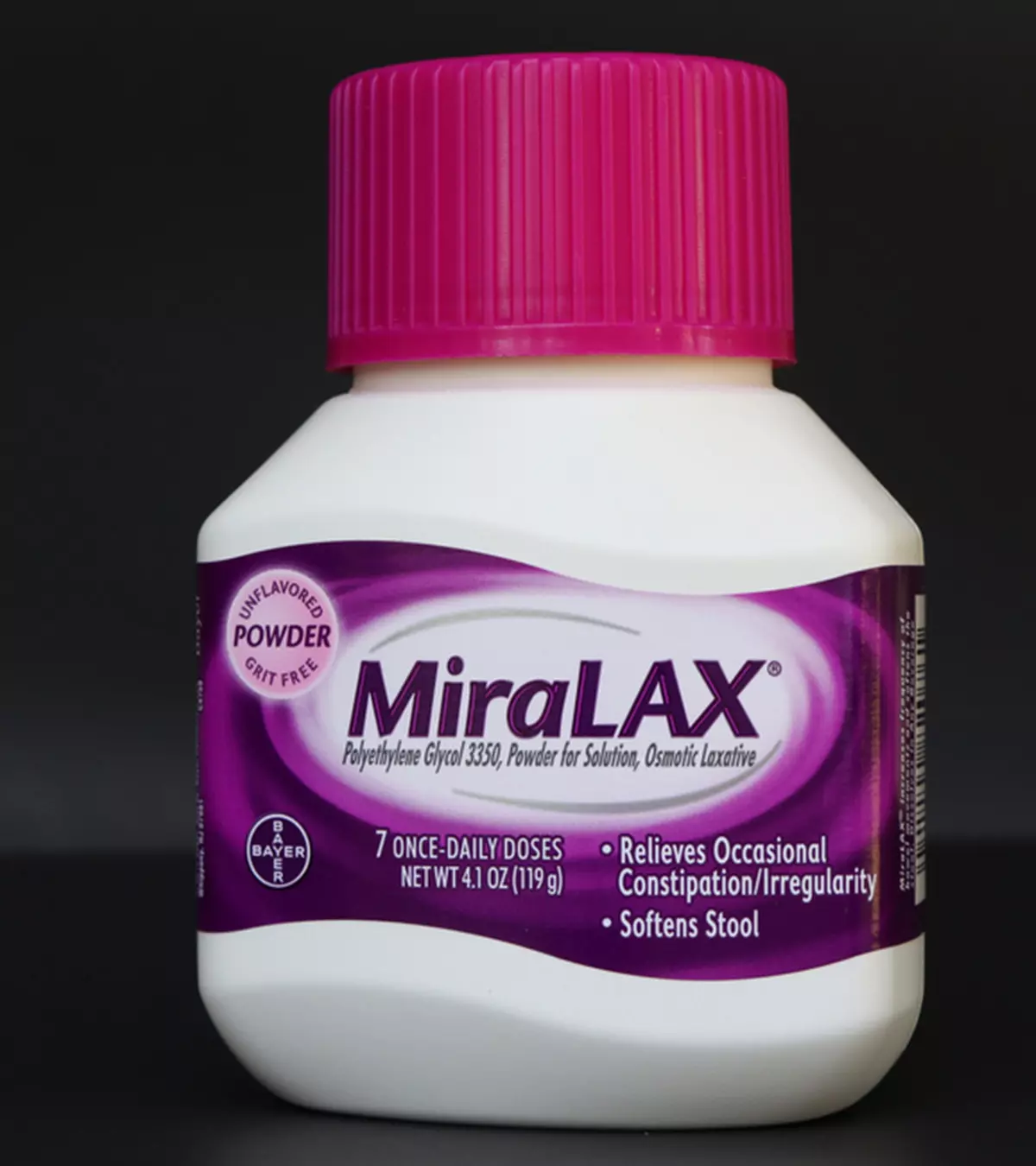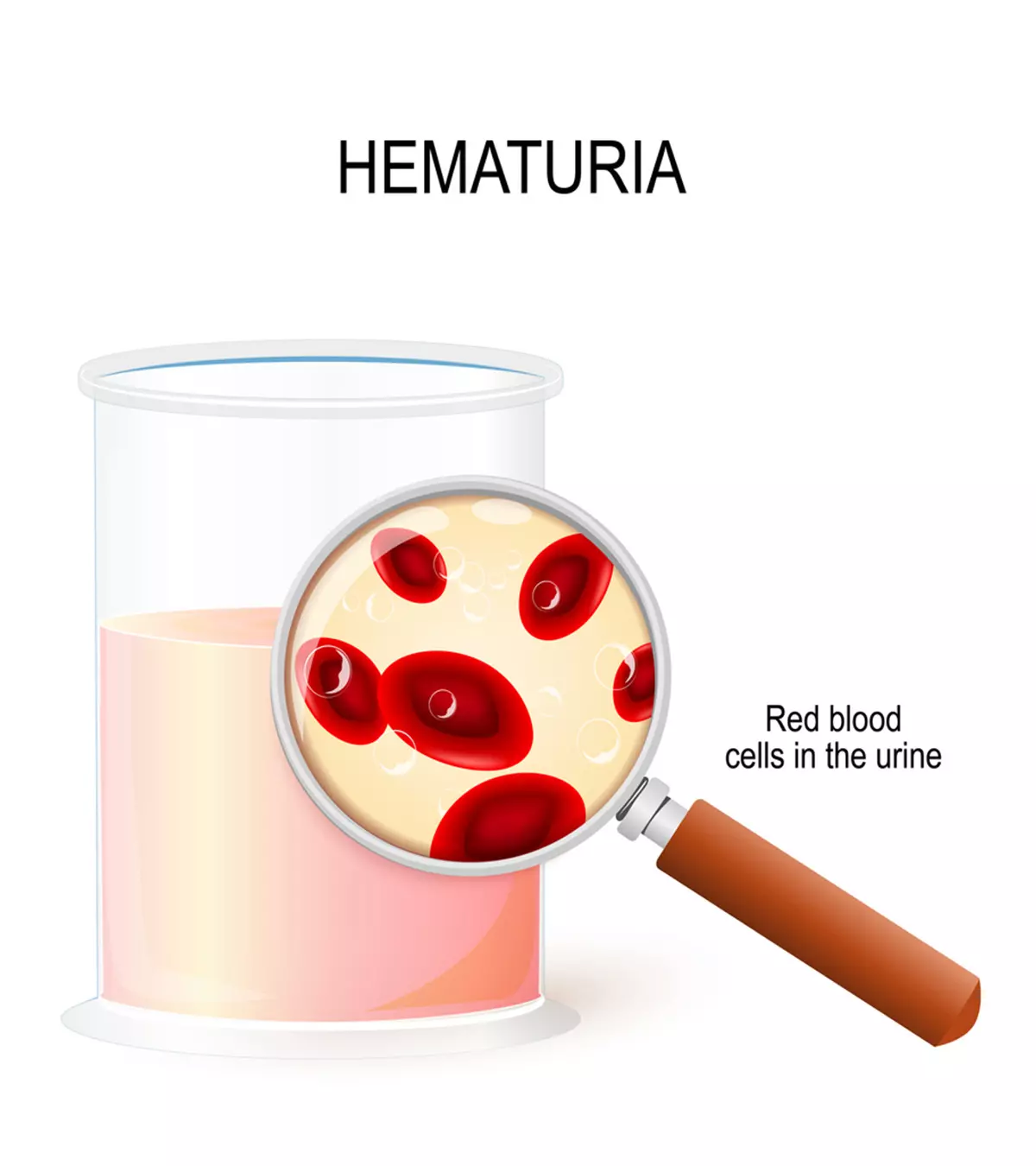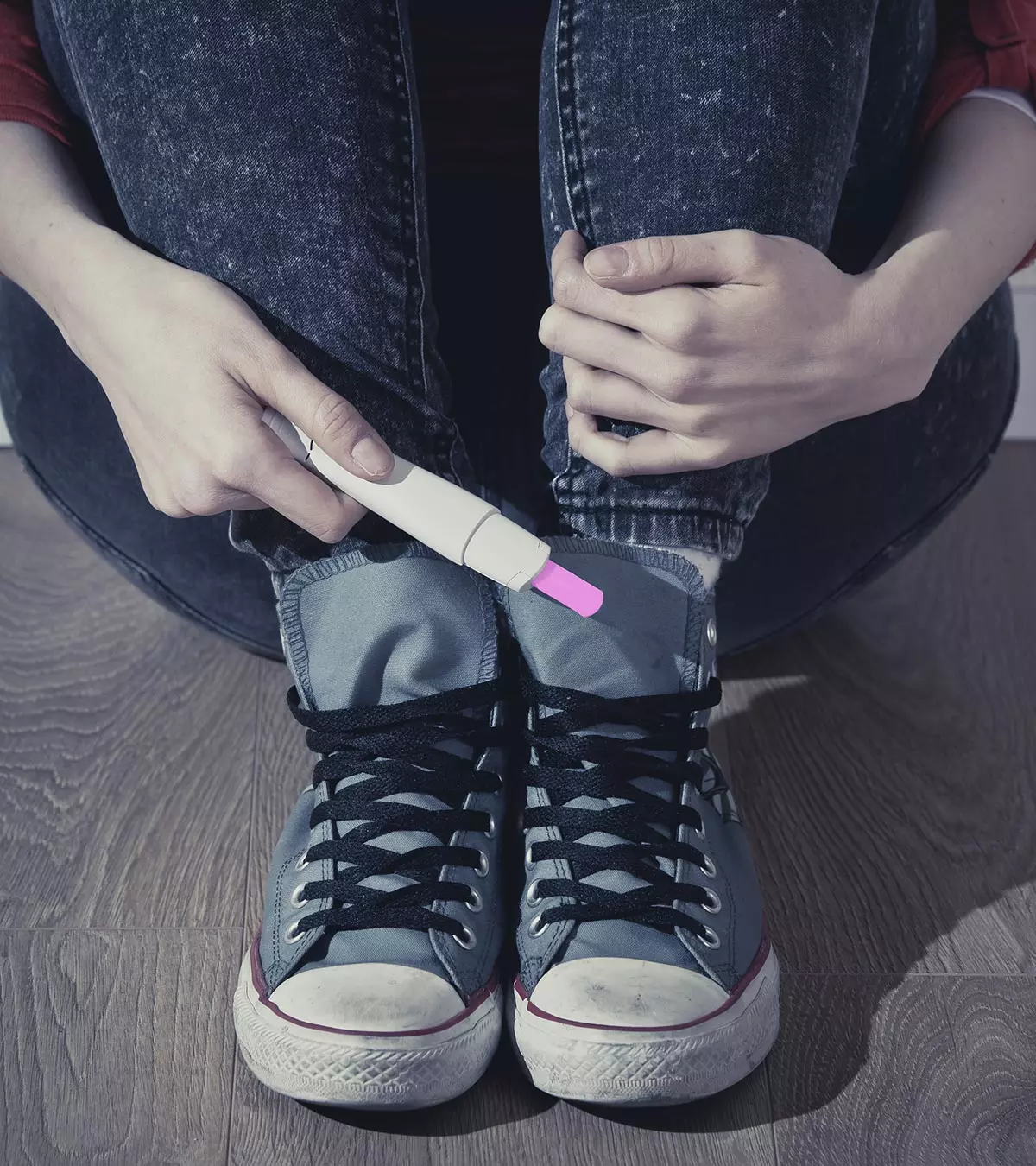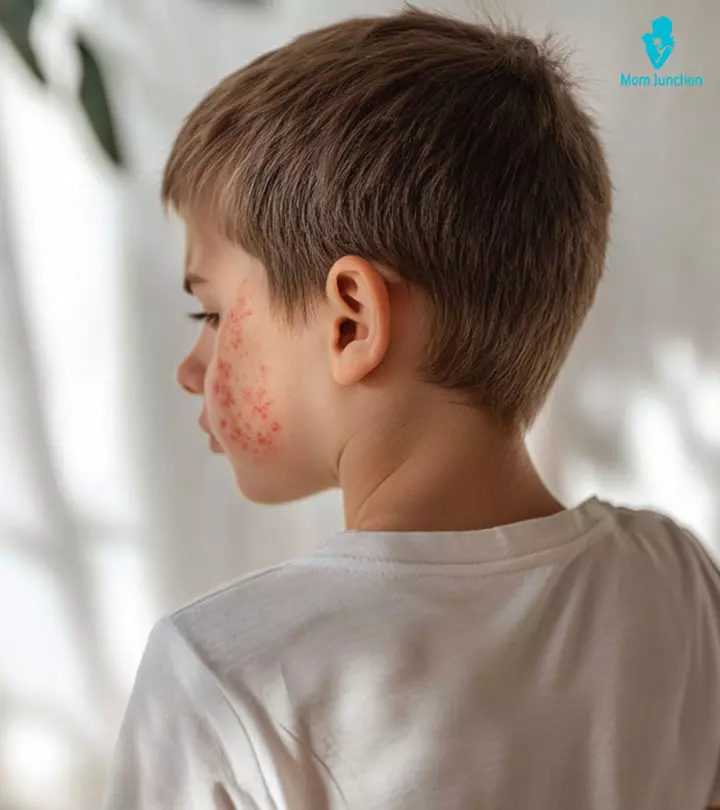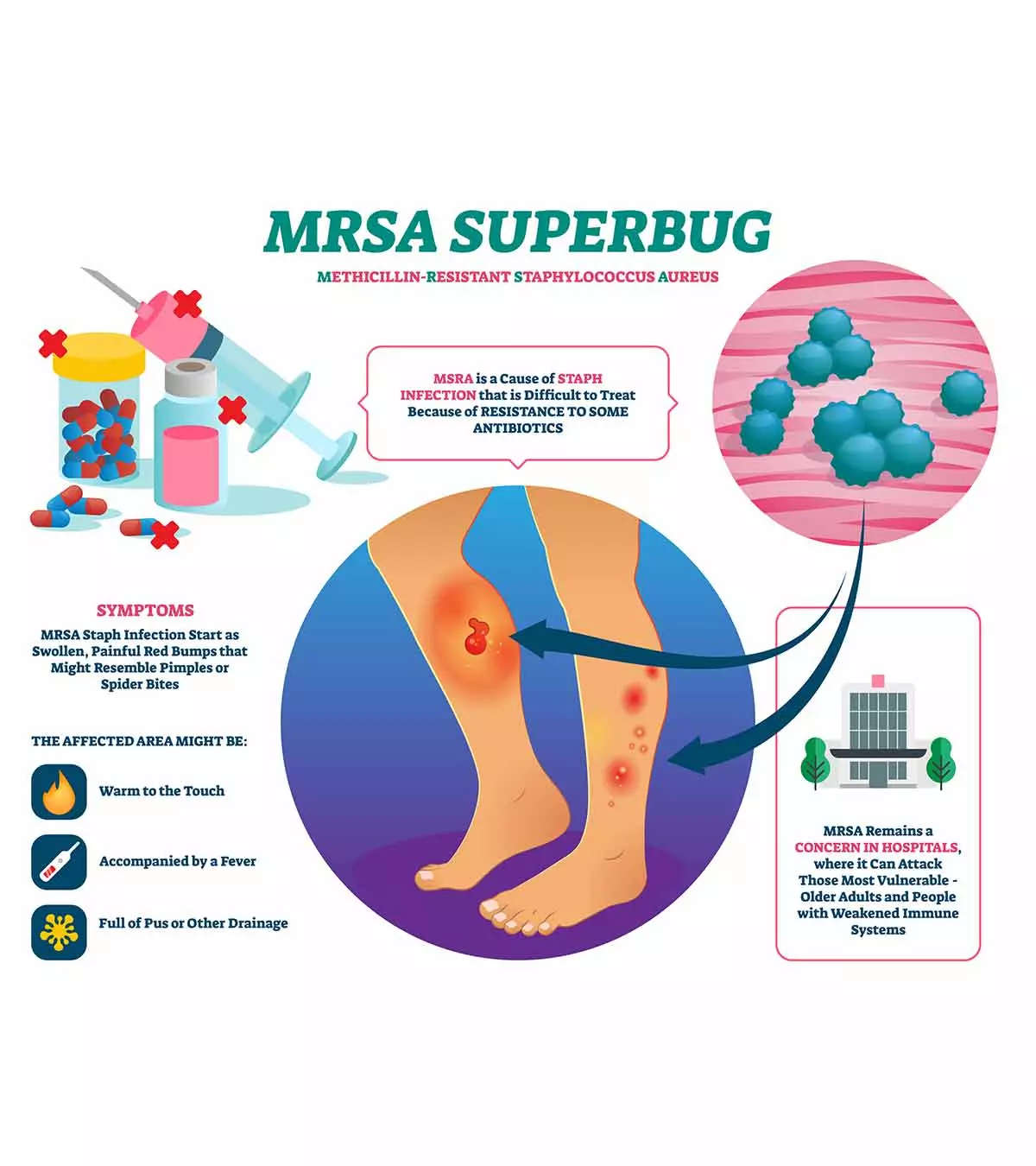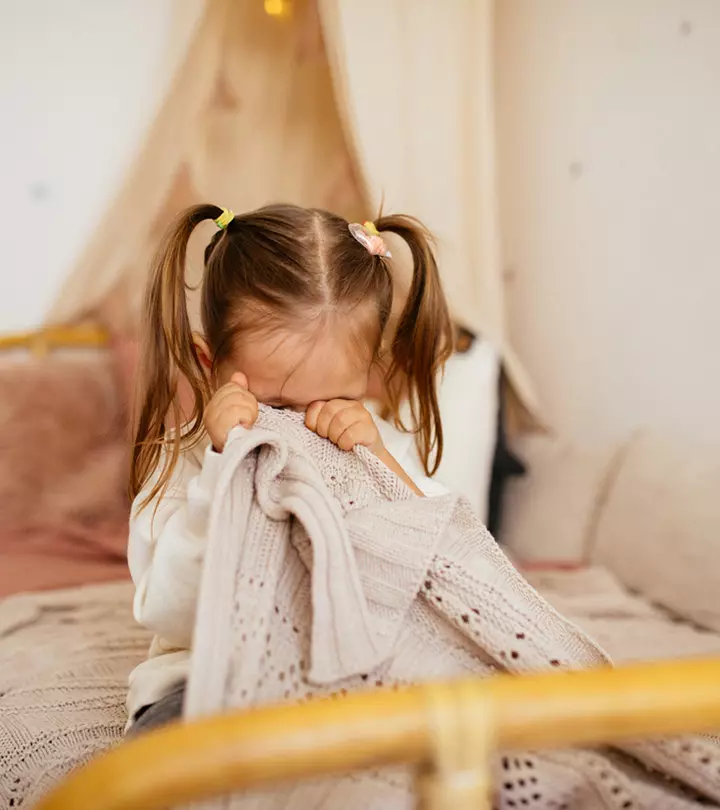
Image: iStock
Good and adequate sleep is an important aspect of a child’s healthy growth. According to the Centers for Disease Control and Prevention (CDC), children aged 6-12 years need at least 9-12 hours of sleep while teens require 8-10 hours of sleep (1). However, it is not uncommon to find childhood sleep disorders, which often interfere with sound sleep (2). Sleep disorders are conditions that make it difficult for children to get enough rest or that cause excessive sleepiness (3).
This post discusses various types of pediatric sleep disorders, what causes them, and how to deal with them.
Key Pointers
- Good quality sleep is essential for a child’s healthy body functioning.
- Children may experience various sleep disorders such as insomnia, narcolepsy, obstructive sleep apnea, and movement problems.
- Sleep difficulties in children may manifest as irritability, bedwetting, nightmares, and difficulty falling asleep.
- Sleep disorders can have negative effects such as poor school performance, behavioral problems, and hyperactivity.
- Treatment options for sleep disorders in children include oral medications, therapy, supplements, and addressing the underlying cause.
Different Types Of Sleep Disorders In Children
While certain sleep problems are caused by specific behaviors, sleep disorders can also be caused by various neurological and other medical conditions. The following are some of the common sleep disorders in children (3) (4) (5) (6).
1. Childhood insomnia
Childhood insomnia (behavioral insomnia of childhood) might affect your child if he or she has trouble falling asleep or staying asleep at least three days a week.
Behavioral sleep disorders, anxiety, depressed mood, or stress are common causes, and so is the inability to turn off the brain from worrying and letting go of the day. This can lead to issues with behavior and learning during the day.
This sleep disorder affects about 10% to 30% of the pediatric population with sleep issues. The most common indicators include refusal to go to bed or trouble falling asleep without the assistance of a parent or an object, such as a favorite toy or blanket.
According to a 15-year longitudinal study conducted by multiple institutions, it was found that 43% of children suffering from childhood insomnia continue showing symptoms later in life. In 20% of children, the symptoms tend to be worse.
2. Obstructive sleep apnea
It impacts a child’s breathing when they sleep, and symptoms can appear as early as 2-8 years of age, with a prevalence rate of at least 1-5%. Snoring, frequent night awakenings, atypical sleep positions, such as hyperextended neck and seated with open mouth, nighttime bedwetting, and morning headaches may be present in your child. Obstructive sleep apnea is more common in children with enlarged tonsils and adenoidsiA mass of tissue behind the nasal cavity that forms a part of the lymphatic system , as well as those with structural issues of the face or head, such as cleft lip and palateiA separation in the lip and palate of a baby caused due to improper development of the fetus during early pregnancy .
 Quick fact
Quick fact3. Parasomnias
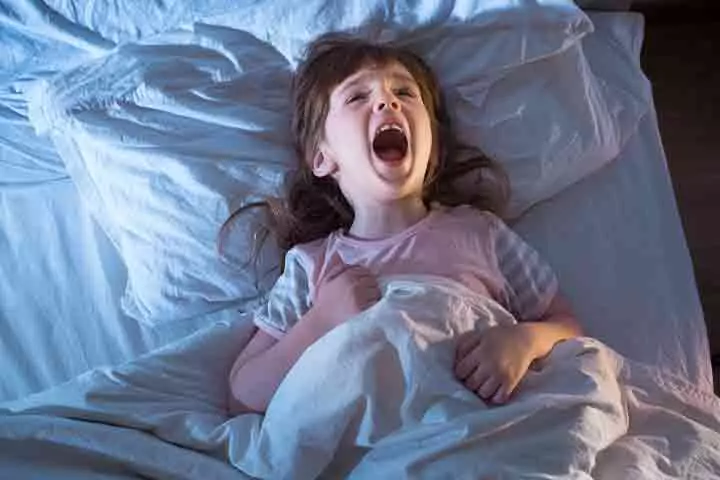
Young children are more likely to encounter this condition where they have unusual physical events, experiences, or behaviors when sleeping. Sleep terrors or night terrors (irrational fear resulting in crying and yelling during sleep), confusional arousals, sleepwalking, sleep talking, and nightmares are all common types of parasomnia.
If the child does not receive enough sleep or is anxious, parasomnia can also be triggered. It can also run in families, so your child is at a higher risk if you had parasomnia as a child. Parasomnias are commonly assumed to be normal in children. They usually do not require treatment unless they are frequent or there is a risk that the child will injure themselves.
4. Hypersomnia
If your child has excessive daytime sleepiness, it could be a sign of hypersomnia. NarcolepsyiA neurological disorder where the brain is unable to regulate the sleep and waking cycles properly , a neurological disorder that causes frequent daytime dozing, a transient lack of muscle control, and hallucinations as a child falls asleep or wakes up, can occur in children with hypersomnia. Hypersomnia can also be caused by delayed sleep phase syndrome or obstructive sleep apnea. However, excessive daytime sleepiness can also be caused due to various illnesses, including concussion and epilepsy.
5. Delayed sleep phase syndrome
Also known as circadian rhythmiThe body’s internal clock that follows a 24-hour rhythm and regulates your body temperature, hormones, and sleeping and eating patterns it is a condition in which your child’s biological clock has an exaggerated version of the typical circadian rhythm shift (a natural, internal process that regulates the sleep-wake cycle and repeats roughly every 24 hours). This could happen in late childhood or early adolescence.
Children with this condition are unable to fall or stay asleep until two or more hours beyond their regular bedtimes, making it difficult to get up in time for school or other activities in the morning. On weekends, children with delayed sleep phase syndrome tend to sleep considerably later than usual.
6. Narcolepsy

It’s a rare neurological sleeping disorder where a child’s brain cannot control or regulate the normal sleep and wake cycle, causing them to want to sleep while they are awake. Poor sleep, extreme tiredness, sleep attacks, and rapid loss of muscle control are all symptoms of narcolepsy in children. Children with narcolepsy often seem to have cataplexy, a sudden and uncontrollable muscle weakness that causes them to collapse (7).
7. Behavioral, neurodevelopmental, and mental health disorders
Certain behavior disorders in the pediatric population, such as attention deficit hyperactivity disorder (ADHD), autism spectrum disorder (ASD), and mental health issues such as anxiety and mood disorders, may also interrupt your child’s sleep.
Children with these conditions often experience insomnia. Additionally, the medications used to treat these conditions may also cause sleep disturbances.
8. Movement disorders
Certain movement disorders and neurological conditions may cause unpleasant sensations in the legs and an overwhelming urge to move them. These sensations may get worse at night while sleeping, interfering with sleep. Some of these movement disorders are:
- Restless legs syndrome: It causes a peculiar feeling while resting or sleeping, urging the child to move their leg. It usually happens in the evening and can be relieved for a short period by moving legs; however, it can recur. Low dopamine (a neurotransmitter that aids motion control) and iron levels in the brain, as well as attention deficit hyperactivity disorder (ADHD), may be linked to this disorder. It could make it difficult for your child to sleep or stay awake.
- Periodic limb movement disorder: In this condition, your child may have short movements during sleep, lasting five seconds and happening at 20- to 40-second intervals. These movements are more common in the legs and arms (8). It can interrupt sleep, resulting in daytime drowsiness, behavioral issues, and learning challenges.
- Rhythmic movement disorder (RMD): It is characterized by repetitive motor actions in children, such as rocking, rolling, or headbanging, which can be a calming approach for some children but disrupt sleep in other children. RMD has also been linked to major daytime impairments as well as self-inflicted bodily damage. While it may not be a cause for concern in younger children, as a parent, you must ensure your child’s safety during these periods and should be wary if your child shows signs of rhythmic movement disorder after the age of five years.
- Bruxism: This condition is the habitual grinding or clenching of teeth during sleep or while awake. The American Academy of Sleep Medicine (AASM) has identified bruxism as a sleep-related movement disorder. Bruxism may occur during various stages of sleep and is linked to factors such as stress, anxiety, hyperactivity, teething, or malocclusion (misalignment of teeth). In some cases, bruxism may contribute to sleep disturbances and impact overall sleep quality. It can lead to symptoms, including jaw pain, worn-out or sensitive teeth, headaches, and disturbed sleep (9) (10). If bruxism is persistent, it is advisable to consult a healthcare professional for a thorough evaluation and appropriate management strategies.
Symptoms Of Sleep Disorders In Children

Although the symptoms of different sleep disorders vary, some of the common symptoms of sleep disorders in children may include (11):
- Difficulty falling asleep
- Difficulty staying asleep
- Making strange noises or snoring during sleep
- Waking up coughing
- Trouble waking up in the morning
- Waking up screaming or in a panic
- Labored breathing or pauses in breathing during sleep
- Irritability
- Falling asleep in class
- Distractibility and difficulty paying attention
- Frequent night wakings
- Bedwetting
- Nightmares
If your child is continuously showing any of these symptoms, you should consult your child’s doctor or a sleep specialist.
Complications Of Sleep Disorders
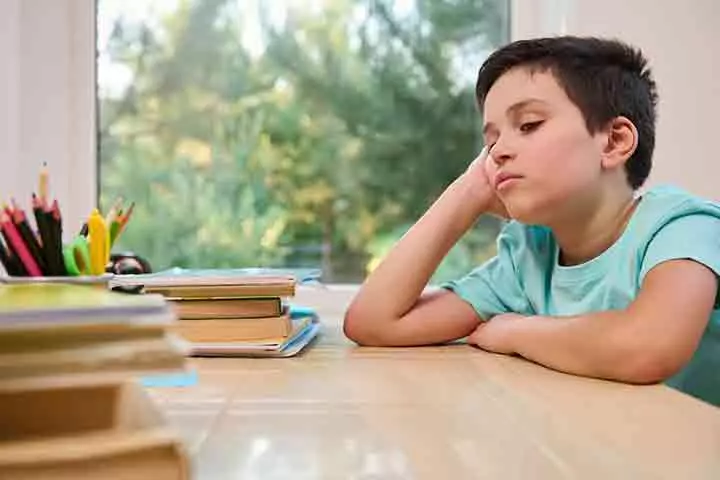
Some of the adverse effects of sleep disorders in children are (12):
- Behavior problems
- Difficulty learning
- Daytime sleepiness
- Irritability
- Hyperactivity
- Poor attention or difficulty concentrating in school
- Problems in cognitive performance, such as attention, learning, and memory
Diagnosis Of Childhood Sleep Disorders
Your child’s doctor will perform a physical exam and ask about your child’s sleeping patterns, medical history, and symptoms. The doctor may also request that you keep a sleep diary or sleep log. The following tests may be suggested to examine the sleep problems and determine their underlying cause (3) (7).
- Sleep study: It is also known as a polysomnogram (PSG). The sleep study is an overnight sleep lab test that measures and records distinct sleep stages to check if your child’s sleep or breathing is abnormal. The test is performed to determine whether or not your child has sleep apnea or other disorders.
- Electroencephalogram (EEG): This test monitors the brain’s electrical activity during sleep and tracks your child’s sleep cycles and periods of wakefulness.
- Actigraphy: This test detects obstructive sleep apnea and insomnia. It includes your child wearing a watch-like gadget with a sensor that monitors sleeping and waking patterns.
- Sleepiness scale: It includes a short questionnaire that asks you or your child to estimate the probability that your child would doze or sleep during various daytime activities, such as school or while watching television. It needs to be completed prior to the first appointment, and then your child’s doctor will score the test during the appointment. If your child gets a high sleepiness score, implying more daytime drowsiness, it may indicate that your child may have a sleep-disrupting disorder (13).
- Multiple sleep latency tests: This test is used to identify narcolepsy and unexplained drowsiness. The test includes monitoring your child’s brain activity and eye movement to observe how quickly he or she goes to sleep over the course of many naps (up to 20 minutes every two hours for as long as 12 hours).
- Blood test: It is useful to detect low iron levels in the blood, often responsible for conditions such as restless legs syndrome and periodic limb movement disorder.
Treatment For Sleep Disorders In Children

The treatment may vary depending on the type of sleep disorder and include the following (6) (7).
- Adenotonsillectomy (surgical removal of tonsils), CPAP (continuous positive airway pressure), BiPAP (bilevel positive airway pressure), and medications, such as nasal steroids, for the treatment of obstructive sleep apnea.
- Benzodiazepines can be useful in conditions such as parasomnia and insomnia in children; however, there are no FDA-approved drugs. Parent counseling can also be given to ensure your child’s safety during various episodes of parasomnias.
- Melatonin supplements before bedtime can be useful to treat delayed sleep phase disorder. Bright light therapy can also be effective to readjust your child’s body clock.
- Iron supplements can be given to replenish low iron levels. In severe cases of restless legs syndrome, medications such as Levodopa, Benzodiazepines, opioidsiPain-relieving medications derived from the opium poppy plant extract , dopamine agonists, or Gabapentin may also be prescribed.
- Modafinil can be prescribed to improve alertness in the case of narcolepsy. The medicine is usually given in the morning and can increase wakefulness. Your child’s doctor may also prescribe some antidepressants before bedtime.
Tips To Manage Sleep Problems In Children
Lifestyle changes and home behavioral therapiesi Different types of therapeutic approaches aimed at managing people’s negative behavior by changing their thoughts and beliefs can help manage sleep disorders and improve the symptoms, helping the child sleep better. You may include strategies such as the following (14).
- Scheduling nap times
- Scheduling consistent times for sleeping and waking up
- Avoiding serving sugar and caffeine to teens, especially before bedtime
- Increasing physical activity and regularly exercising
- Avoiding or minimizing screen time (using smartphones and watching television) before bedtime
- Setting a quiet time before bed
- Increasing total sleep time
- Modeling good sleep behaviors for your child
- Setting positive bedtime routines, such as warm bath, poem or story reading, and brushing teeth
 Quick tip
Quick tipFrequently Asked Questions
1. How do I get my child to relax and sleep?
A relaxing and calming bath, meditation, calming music, focused breathing, ideal room temperature, comfortable clothes, and a cozy blanket are some ways you can relax your child so that they can sleep better (15).
2. How do sleep disorders affect children’s daily lives?
Sleep disorders may cause problems with social and emotional functioning. They may also lead to problems with neurocognitive performances, increased absence from school, fatigue, and daytime sleepiness (16).
3. How long do sleep disorders in children typically last?
The time they last in each case may vary depending on the sleep disorder type. For instance, acute insomnia is short-term and mostly lasts for one night or a week. Chronic insomnia, on the other hand, is long-term and causes sleep issues for at least three nights a week for a month or longer. Furthermore, chronic insomnia may also have phases where you may not experience any symptoms (17).
4. How do children’s sleep disorders affect their academic performance?
Children with sleep disorders often experience daytime sleepiness and fatigue, making it challenging to stay alert and concentrate. Research shows that inconsistent or insufficient sleep results may impair cognitive functions, which can significantly decrease academic performance (18).
5. What role does genetics play in developing sleep disorders in children?
Scientific evidence shows that genes might influence the signaling pathways and neurotransmission in sleep processes and circadian regulation. Genetic and environmental factors often club together and cause sleep disruption (19).
6. What are the long-term consequences of untreated sleep disorders in children?
Untreated sleep disorders in children may increase the risk of anxiety, mood disorders, and accidents. A sleep-deprived child might develop false memory and a subsequent cognitive decline. Untreated sleep apnea may lead to cardiovascular disorders, whereas periodic limb movement sleep disorder may raise the risk of cerebrovascular accidents (20).
Sleep disorders are conditions that make it difficult for children to get enough rest or that cause excessive sleepiness. These disorders can often be managed with lifestyle changes, and the symptoms may improve as the child grows older. Sleep disorders with severe symptoms or those that lead to debilitating complications can require medical treatment with long-term management strategies.
Infographic: How To Improve Sleep Quality In Children?
Sleep problems in children can substantially impact their everyday lives, impacting their mood, behaviors, and concentration abilities. Thus, it is essential to tackle sleep issues to prevent long-term effects on the child. The infographic below offers practical suggestions to improve sleep quality in children.

Illustration: Momjunction Design Team
Illustration: Types Of Child Sleep Disorders Symptoms And Treatment
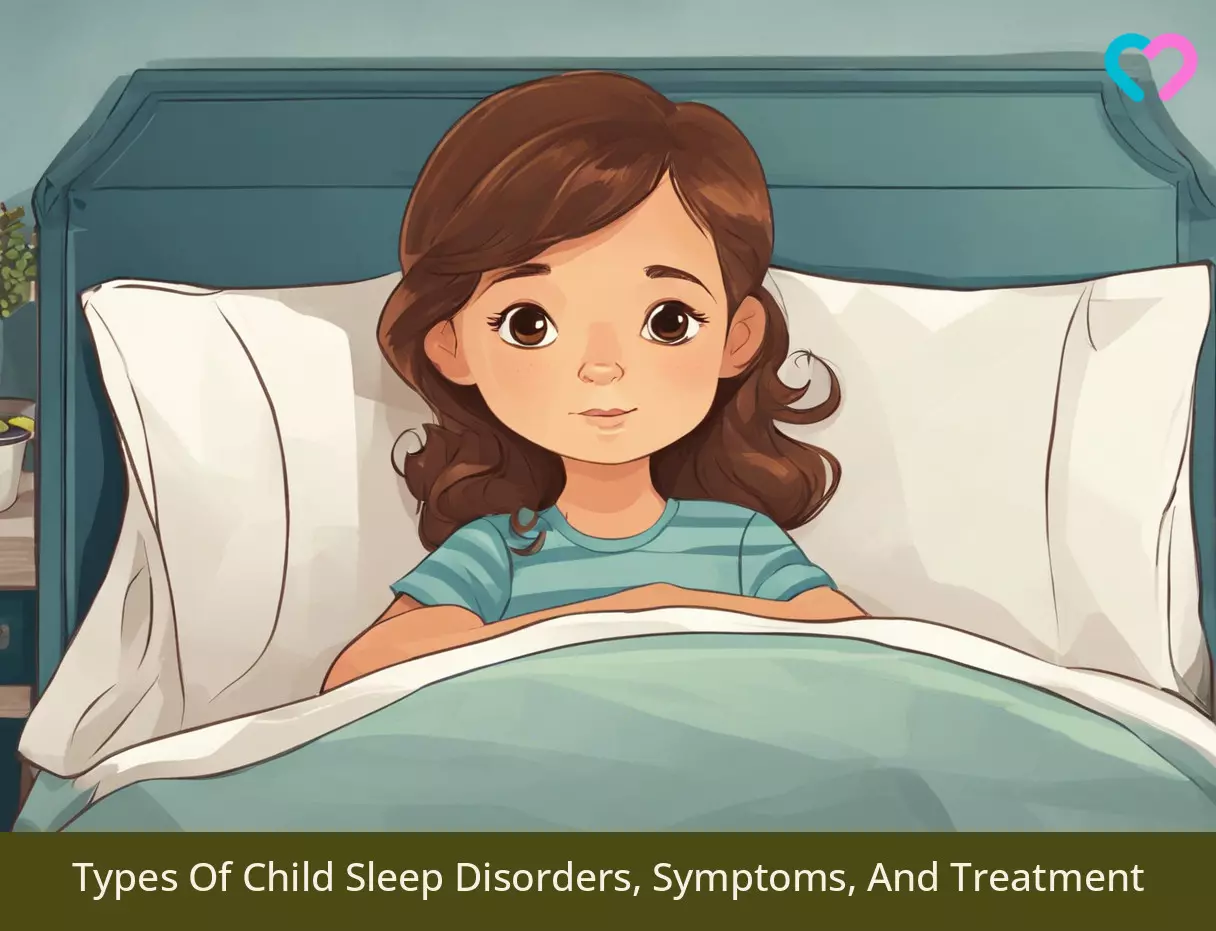
Image: Stable Diffusion/MomJunction Design Team
Whether due to inconsistent sleep schedules or other reasons, sleep disorders in children can disrupt their lives. Learn about the latest treatments and discover how to help your child get a better night’s sleep.
References
- Sleep in Middle and High School Students.
https://archive.cdc.gov/#/details?url=https://www.cdc.gov/healthyschools/features/students-sleep.htm - Sleep in School-Aged Children.
https://www.nationwidechildrens.org/specialties/sleep-disorder-center/sleep-in-school-aged-children - Sleep Disorders in Children.
https://www.childrenscolorado.org/conditions-and-advice/conditions-and-symptoms/conditions/sleep-disorders-children/ - Behavioral Treatments for Sleep Disorders in Children.
https://nyulangone.org/conditions/sleep-disorders-in-children/types - Sleep Problems and Sleep Disorders in School Aged Children.
https://www.sleephealthfoundation.org.au/sleep-disorders/sleep-problems-and-sleep-disorders-in-school-aged-children - Kevin a. Carter et al; (2014); Common Sleep Disorders in Children.
https://www.aafp.org/pubs/afp/issues/2014/0301/p368.html - Pediatric Sleep Disorders.
https://www.ohsu.edu/doernbecher/pediatric-sleep-disorders - Sricharan Moturi and Kristin Avis; (2010); Assessment and treatment of common pediatric sleep disorders.
https://www.ncbi.nlm.nih.gov/pmc/articles/PMC2898839/ - Sylwia Bulanda et al.; (2021); Sleep Bruxism in Children: Etiology, Diagnosis, and Treatment—A Literature Review.
https://www.ncbi.nlm.nih.gov/pmc/articles/PMC8471284/#B4-ijerph-18-09544 - Bruxism (Teeth Grinding or Clenching).
https://kidshealth.org/en/parents/bruxism.html - ADHD and Sleep Disorders: Are Kids Getting Misdiagnosed?
https://childmind.org/article/adhd-sleep-disorders-misdiagnosed/ - Pediatric Sleep Disorders.
https://www.medstarhealth.org/services/pediatric-sleep-disorders-clinic - Diagnosing Sleep Disorders in Children.
https://nyulangone.org/conditions/sleep-disorders-in-children/diagnosis - Sleep and Health.
https://www.cdc.gov/physical-activity-education/staying-healthy/sleep.html?CDC_AAref_Val=https://www.cdc.gov/healthyschools/sleep.htm - How to Help Kids Who Have Trouble Sleeping
https://childmind.org/article/how-to-help-kids-sleep/ - Amy S. Lewandowski et al.; Sleep Problems in Children and Adolescents with Common Medical Conditions
https://www.ncbi.nlm.nih.gov/pmc/articles/PMC3100529/ - Common Sleep Disorders
https://my.clevelandclinic.org/health/articles/11429-sleep-disorders - Natalie Guadiana et al.; (2021); The Effects of Sleep Deprivation on College Students
https://scholar.dominican.edu/cgi/viewcontent.cgi?article=1029&context=nursing-senior-theses - Greta Mainieri et al.; (2021); The Genetics of Sleep Disorders in Children: A Narrative Review
https://www.ncbi.nlm.nih.gov/pmc/articles/PMC8534132/ - Bibek Karna et al.; (2023); Sleep Disorder
https://www.ncbi.nlm.nih.gov/books/NBK560720/ - Obstructive Sleep Apnea in Children.
https://www.stanfordchildrens.org/en/topic/default?id=obstructive-sleep-apnea-in-children-90-P02026 - 4 Ways Weighted Blankets Can Actually Help You.
https://www.pennmedicine.org/updates/blogs/health-and-wellness/2022/march/weighted-blankets
Community Experiences
Join the conversation and become a part of our nurturing community! Share your stories, experiences, and insights to connect with fellow parents.
Read full bio of Emily Lau
Read full bio of Reshmi Das
Read full bio of Dr. Ritika Shah
Read full bio of Apoorva K










